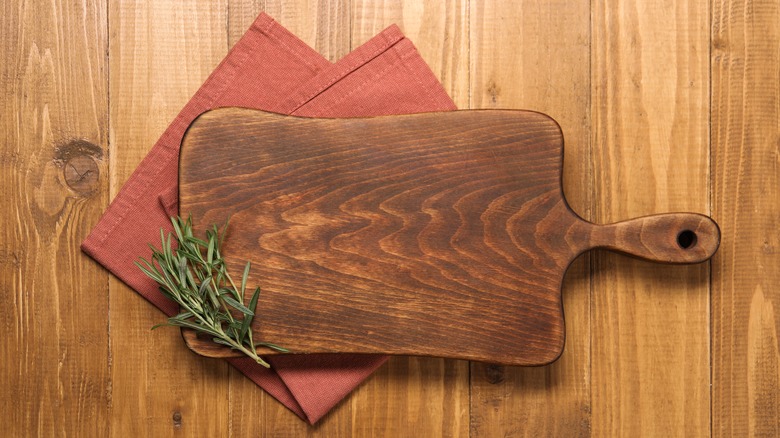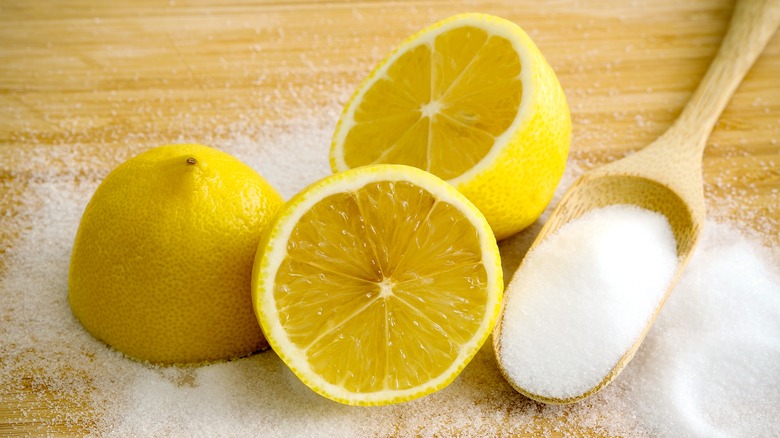Can You Sanitize A Cutting Board With Only Natural Ingredients?
Considering it's used to prepare food, it's reasonable to try and limit the amount of harsh chemicals that come into contact with your cutting board during the cleaning process. However, when deciding what chemical cleaners you want to replace with natural products, it's important to remember that there is a big difference between cleaning and sanitizing a surface. While the former involves rinsing or scrubbing debris off of something like a cutting board, sanitizing entails eliminating all bacteria. Lemons, a natural cleaning ingredient, do contain some sanitizing properties, but they are often not a suitable replacement for chemical cleaners.
Wiping down a cutting board with lemon juice in between uses is a fine, natural way to keep it clean so long as you're not cutting raw meat. In other words, if you only use a cutting board to slice up bread, fruits, and veggies, the natural antibacterial properties of lemon can help keep it sanitary. However, lemons aren't strong enough to clean a cutting board that has come into contact with raw meat, so you will need to use something like bleach to properly disinfect it. Lemons may not be the best choice for sanitizing, but there are a lot of other unexpected household uses for lemon juice, especially around the kitchen.
Natural ingredients can't sanitize, but they can clean
While they won't sanitize your cutting boards, you can still use natural ingredients like lemons and salt to give your cutting boards a good cleaning. After rinsing the board with warm water, sprinkle it with coarse salt, adding extra to stains or especially caked-on bits of food. Then, rub the exposed side of a cut lemon all over the board. The salt will act as a scouring agent while the lemon acts as a mild disinfectant and deodorizer. Rinse off any leftover juice or salt, and set your fresh, citrus-scented cutting board out to dry. You can do this with cutting boards made out of wood or plastic, although we suggest that it's time to ditch plastic cutting boards due to microplastics.
To properly sanitize a cutting board after cutting raw meat or other potentially contaminated food, start by adding a spoonful of bleach to a quart of water. To make the process a little easier, pour the diluted bleach solution into a spray bottle before applying it to both sides of the cutting board. Wait a few minutes before rinsing the board with hot water. If you don't want to use bleach on the same cutting board you use for daily tasks, consider getting a second board designated for preparing raw meat. You might want to hit up the kitchen supply store anyway, especially if you've noticed the signs that mean it's time to replace your kitchen cutting boards, like deep cuts or difficulty cleaning them.

